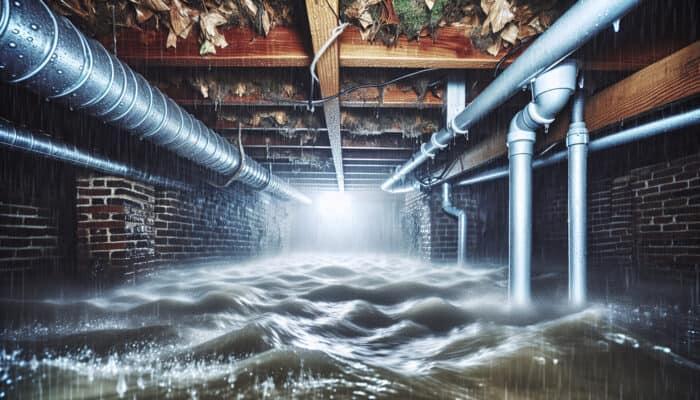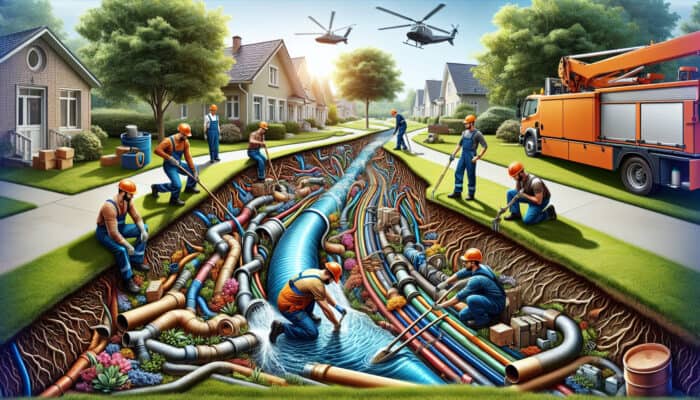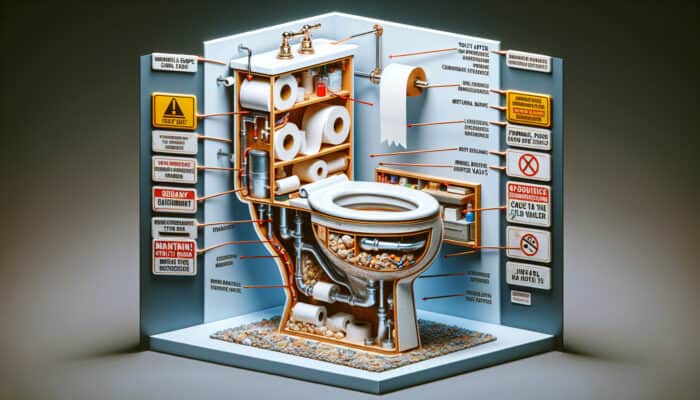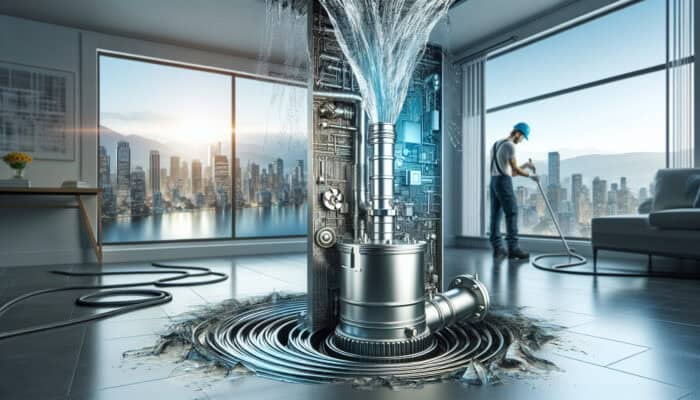Enhance Your Emotional Readiness for a Successful House Clearance
Recognizing and Accepting Your Emotional Journey

Embarking on the house clearance journey can stir a complex array of emotions, including sadness, relief, anxiety, and anticipation. These feelings often emerge from the deep-rooted connections to the memories associated with the space and its contents. It is essential to acknowledge and accept these emotions as part of your journey. By doing so, you allow yourself to navigate through the emotional landscape more effectively. Ignoring or suppressing these feelings can lead to prolonged emotional distress, obstructing your progress. Embrace and validate every emotion that arises, whether it’s nostalgia while sorting through a beloved item or the liberating sensation that accompanies the decision to let go.
Taking time for introspection on each emotion you encounter is fundamental. When handling a meaningful possession, permit yourself to reflect on the memories it invokes. Welcome each feeling without judgment; this step is crucial in processing your experience. Additionally, consider utilizing journaling as a therapeutic outlet during this time—documenting your emotions can provide clarity and facilitate emotional release.
Effective Stress Management Techniques for House Clearance
The stress that often accompanies house clearance is typically rooted in the emotional weight of the task, combined with the physical challenges of sorting and packing. Identifying the specific sources of your stress is the initial step towards effective management. Techniques such as mindfulness, deep breathing exercises, and scheduled breaks can offer significant relief. To create a more tranquil environment, consider implementing the following relaxation strategies:
- Practice deep breathing for five minutes to calm your mind and center your thoughts.
- Take regular breaks to prevent burnout and maintain concentration.
- Engage in light physical activities, like taking a brisk walk in nature, to refresh your spirit.
- Listen to calming music or nature sounds to enhance your atmosphere.
- Incorporate brief meditation sessions to attain emotional clarity.
- Develop a supportive network to share your feelings with trusted friends and family.
- Explore the benefits of aromatherapy with soothing scents like lavender to promote relaxation.
- Create a ritual to signify the beginning and end of each clearing session, marking your progress.
By adopting these techniques, you can discover much-needed relief during what may feel like an overwhelming period. These strategies encourage a present-focused mindset, enabling you to tackle tasks with enhanced efficiency and a clearer perspective.
Creating a Strong Support Network for Your Emotional Well-Being
An effective support network can significantly boost your emotional resilience during the house clearance process. Engaging with friends, family, or even professional services can provide the emotional backing needed to navigate this arduous endeavor. Don’t hesitate to reach out to individuals who have faced similar challenges, as their experiences can offer valuable insights and reassurance. A simple phone call or a coffee meet-up can remind you that you are not alone in this journey.
Consider inviting supportive friends or family members to assist with the clearance process. Their involvement can transform the daunting task into a collaborative effort, making it more manageable and enjoyable. Additionally, professionals such as therapists or decluttering specialists can serve as invaluable resources, offering both emotional support and practical strategies tailored to your unique situation. They understand the emotional complexities associated with house clearance and can guide you compassionately through the process.
Setting Realistic Expectations for a Smoother Clearance Experience

House clearance is seldom a quick or simple endeavor; establishing realistic expectations is crucial for maintaining motivation and avoiding feelings of disappointment. Begin by segmenting the process into achievable goals. For example, aim to clear one room each day or focus on specific categories of items, such as clothing or memorabilia. This structured breakdown fosters a sense of accomplishment as you progress through each segment.
Moreover, remember that emotional processing is a gradual journey. Allow yourself the necessary time to experience a spectrum of emotions without rushing the process. By setting attainable goals, you reduce the likelihood of feeling overwhelmed, which often leads to procrastination. Document your progress and celebrate small victories along the way, reminding yourself that it is entirely acceptable to take breaks as needed.
Reflecting on Memories: A Vital Part of House Clearance
As you embark on house clearance, it is essential to take moments to reflect on the memories associated with the items you are sorting through. This reflection can facilitate emotional healing and help individuals find closure. Each item usually carries a story or significant memory, and recognizing these connections can alleviate the emotional weight of letting go.
Consider designating specific times during your clearance to reminisce about the memories linked to particular items. This could involve sharing stories with friends or family present or documenting your thoughts in a journal. Such reflective practices can transform the task from a mere physical act into a meaningful tribute to your past. Framing the decision of what to keep or release as a celebration of those memories can considerably ease the process, emphasizing the positive rather than the loss.
Expert Insights on Emotional Strategies for Effective House Clearance
Proven Strategies for Managing Emotions During House Clearance

Some of the most effective strategies for managing emotions during house clearance involve setting realistic goals and cultivating a positive outlook. Experts in emotional well-being emphasize the importance of approaching the task with a mindset centered on self-compassion and patience. Research indicates that individuals who break tasks into smaller, achievable components experience lower levels of anxiety and a heightened sense of accomplishment. Moreover, practicing positive self-talk can significantly enhance your emotional resilience throughout the process.
Real-life examples underscore the effectiveness of these strategies. For instance, Sarah faced the overwhelming task of clearing her late mother’s home. Rather than trying to tackle everything at once, she dedicated two hours each day to focus on one room at a time. This approach not only made the workload more manageable but also allowed her the time to remember her mother, ultimately leading to closure and healing. Balancing productivity with emotional processing can significantly enrich your overall experience.
How Professionals Navigate the Emotional Aspects of Clearance
Professional organizers and therapists utilize specific methodologies to address the emotional aspects of house clearance, emphasizing empathy and understanding. Their approach typically begins with establishing rapport, helping individuals feel safe to express their emotions throughout the clearing process. One effective strategy they employ is guided conversations, encouraging clients to discuss their feelings openly as they sort through items. This method can lead to profound realizations regarding the significance of certain possessions.
Professionals recommend focusing on ‘anchor’ items—those that carry substantial emotional weight—and guiding clients through understanding their connections to these possessions. By prioritizing these items, clients can better manage their emotional burdens. Techniques such as visualization, where individuals imagine a future without specific items, have also proven beneficial in facilitating the letting-go process. Employing such methods can transform house clearance into a deeply transformative experience.
The Importance of Keeping Memory Keepsakes During Clearance
Selecting meaningful keepsakes can significantly enhance the emotional aspect of house clearance, allowing individuals to preserve cherished memories while alleviating the burden of parting with other items. Experts suggest that instead of attempting to retain everything, individuals should curate a thoughtful collection of belongings that genuinely resonate with their past. This practice not only minimizes clutter but also creates a meaningful archive of memories.
When choosing keepsakes, consider the emotional significance, practical storage solutions, and the memories associated with each item. For instance, a framed photograph, a piece of jewelry, or a handwritten letter might hold far more emotional value than numerous clothing items. By emphasizing quality over quantity, you can create a tangible representation of your history while reducing the overwhelming feeling that often accompanies material possessions.
How Mindfulness Techniques Can Support Emotional Processing
Incorporating mindfulness techniques during house clearance can significantly enhance emotional processing. Mindfulness encourages individuals to remain present, acknowledging their thoughts and feelings without judgment. Techniques such as breathing exercises and meditation can help ground you, particularly during emotionally taxing moments. For instance, taking a few moments to breathe deeply before tackling a particularly challenging task can bring clarity and calm.
Experts recommend integrating brief mindfulness practices throughout the clearing process. For example, upon entering a room, take a moment to center yourself with a deep breath, followed by a slow exhalation, allowing the space to settle in your mind. These practices can cultivate a sense of calm and focus, enabling you to approach emotionally charged tasks with a clearer and more balanced mindset. Incorporating mindfulness into your routine can create a more emotionally supportive environment during house clearance.
The Role of Support Systems in Enhancing Emotional Well-Being
The existence of a robust support system is crucial in alleviating the emotional strain associated with house clearance. This network can comprise friends, family, or support groups that provide empathy and companionship during this challenging period. Research consistently indicates that shared experiences can enhance resilience, making it easier to cope with emotional upheaval. Engaging with others who can empathize with your situation validates your feelings and offers essential reassurance.
Building an effective support network involves being open about your needs. If you find yourself overwhelmed by emotions, consider expressing these feelings to your friends or family. Often, those closest to you are eager to help but may not know how. Invite them to join you in the house clearance process, transforming it into a shared experience that fosters connection and comfort. Support groups, whether in-person or online, can also offer valuable resources and a sense of community during this transitional time.
Essential Strategies for Emotionally Balanced House Clearance
Organizing Your Items by Emotional Significance
Establishing a structured system for sorting items based on their emotional significance can streamline the house clearance process, making it more manageable. By categorizing your belongings, you can approach the task with clarity and purpose. Consider employing the following sorting categories: keep, donate, sell, recycle, and Discard. Each category serves a distinct purpose, helping you navigate your possessions methodically.
- Keep – Items that have strong emotional ties and hold significant meaning for you.
- Donate – Items in good condition that could be useful to others, providing them a second life.
- Sell – Valuable items that may offer a financial return, contributing to your future.
- Recycle – Items made from recyclable materials that can be disposed of responsibly, minimizing waste.
- Discard – Damaged or worn-out items that no longer serve a purpose in your life.
This method not only aids in decision-making but also fosters emotional clarity as you advance through the clearance. Consider setting a timer for each category to maintain focus while still allowing adequate time to process the emotions linked to each item. By establishing this system, you create a more organized approach to what is inherently a chaotic experience.
Navigating Sentimental Items During House Clearance
Determining the fate of sentimental items can be one of the most challenging aspects of house clearance. The emotional weight attached to these belongings can cloud your decision-making, leading to increased stress and anxiety. It is vital to approach this process with thoughtfulness, weighing the emotional significance against practical considerations. Begin by assessing how each item makes you feel and whether it positively contributes to your life.
Consider various options, such as keeping certain items, donating them to someone who may cherish their sentimental value, or even creating a memory box to organize select keepsakes. The emotional relief of letting go can often surpass the initial pangs of loss when you recognize that the memories linked to an item remain intact, even if the physical object is no longer present. Ultimately, choose to retain items that resonate with you, allowing others to find new homes where they can continue to bring joy.
Establishing Realistic Timelines for House Clearance
Creating a realistic timeline for house clearance can significantly reduce stress levels and enhance your emotional well-being throughout the process. Develop a clear schedule that divides tasks into manageable units, taking into account your emotional and physical energy levels. Flexibility in your timeline is crucial; it’s important to accommodate days when you may feel overwhelmed or need additional time to process your emotions.
For example, designate specific days for each room or category, ensuring that you allocate enough time to address the emotional aspects of the process. Incorporating breaks or self-care days can provide essential emotional respite. Don’t forget to reward yourself after completing each task, reinforcing positive feelings and motivating you to continue. By establishing a realistic timeframe, you empower yourself to navigate the emotional landscape of house clearance with greater ease.
Addressing Grief and Loss During House Clearance
Coping with Grief and Loss Effectively
Clearing the home of a loved one often invokes profound feelings of grief and loss, necessitating a thoughtful approach to navigate these complex emotions. Utilizing emotional tools can assist in processing your feelings and foster a sense of closure. Recognize that grief may manifest in various forms, from sadness to anger, and allow yourself to experience these emotions without guilt.
Incorporate practices like journaling or seeking the guidance of a therapist to explore your feelings as you clear the space. Rituals can also play a significant role in honoring your loved one’s memory—lighting a candle, sharing stories with family, or creating a memory board can serve as meaningful gestures to help you process your grief. Engaging with your emotions rather than avoiding them will ultimately aid in navigating this challenging experience and pave the way toward healing.
The Role of Rituals in Achieving Closure
Integrating rituals into the house clearance process can significantly aid in achieving closure and honoring the memories associated with the home and its former inhabitants. Rituals can take many forms, from simply pausing to reflect before entering each room to more formal practices, such as a farewell ceremony for significant items or bringing family members together to share memories.
For instance, some individuals choose to hold a ‘celebration of life’ gathering in the home before commencing the clearance, encouraging everyone to share stories and reminisce. This can foster a deep sense of connection and closure. By establishing rituals, you create intentional moments to acknowledge the past while providing a framework for moving forward. These practices can transform an emotionally charged process into a meaningful and respectful farewell.
When to Seek Professional Support During House Clearance
Recognizing when to seek professional help is crucial during the emotionally intense house clearance process. If feelings of grief or stress become overwhelming and disrupt your ability to function, consider consulting a therapist or counselor specializing in grief or life transitions. They can offer valuable coping strategies tailored to your unique situation.
Therapists often use techniques like cognitive behavioral therapy or mindfulness practices to assist clients in processing emotions related to loss. Professional guidance can help you navigate the complex feelings that arise during house clearance, providing a safe space to express your emotions and gain insights into your experience. Seeking assistance is a sign of strength and can substantially support your emotional healing journey.
Research-Backed Benefits of Emotional Tool Tips for House Clearance
Enhancing Resilience Through Emotional Tool Tips
Utilizing emotional tool tips during house clearance can bolster your emotional resilience, better preparing you to handle future life changes. Emotional resilience refers to your ability to adapt and recover from adversity, a crucial skill during significant transitions like moving or coping with loss. By actively engaging with emotional tools, such as mindfulness, journaling, and structured sorting, you nurture coping mechanisms that extend beyond just house clearance.
Consider taking actionable steps to build resilience, such as engaging in regular self-reflection and nurturing connections with supportive friends and family. Additionally, practicing gratitude by recognizing the positive aspects of your experience can enhance your emotional strength. Over time, these practices contribute to a more resilient mindset, enabling you to confront challenges with increased confidence and adaptability.
The Positive Impact of Emotional Clearance on Mental Health
The emotional clearance process positively influences mental health, leading to reduced anxiety and improved emotional well-being. Engaging in house clearance allows individuals to confront and process their emotions, resulting in significant relief. The act of physically removing items often symbolizes emotional letting go, contributing to a lighter mental state.
Experts have observed that individuals who actively participate in emotional clearance frequently report enhanced feelings of control and empowerment. These psychological benefits are crucial in establishing a foundation for healthier emotional management moving forward. Addressing emotional ties to possessions can culminate in a more positive outlook on life, thereby aiding in overall mental health improvement.
The Contribution of Emotional Processing to Long-Term Well-Being
Implementing emotional tools during house clearance can promote long-term emotional well-being and personal growth. The skills developed throughout this process—such as resilience, emotional awareness, and the ability to navigate grief—can serve you well in future transitions and challenges. By learning to recognize and address your emotional responses, you build a solid foundation for handling life’s inevitable ups and downs.
Incorporating reflective practices, like journaling about your experiences and feelings during house clearance, can enhance personal growth and provide insights into your emotional landscape. Over time, these tools can lead to a deeper understanding of yourself and your capacity for coping with change, greatly enriching your emotional well-being.
Supporting Your Emotional Health After House Clearance
Reflecting on Your House Clearance Experience
Taking time to reflect on your house clearance experience is essential for your emotional well-being following the process. This reflection enables you to evaluate what you learned about yourself, how you managed your emotions, and the insights that emerged during this journey. Engaging in self-reflection can solidify the lessons learned and provide valuable perspective as you move forward.
Consider journaling about your experiences, noting not just the practical aspects of the clearance but also the emotional journey you undertook. Reflect on the feelings you experienced, the memories you recalled, and the decisions you made regarding items. This exercise will help reinforce your emotional growth and keep the memories of your loved ones alive positively, aiding in your transition to a new chapter in your life.
Strategies for Maintaining Emotional Health After House Clearance
Implementing strategies to nurture your emotional health post-clearance is vital for ongoing well-being. Activities such as journaling, engaging in creative outlets, or practicing mindfulness can provide continued emotional support. Regularly setting aside time for self-care enhances your emotional resilience.
Continuing to utilize the emotional tools you acquired during house clearance—such as mindfulness techniques or structured reflection—enables you to navigate future challenges with greater ease. Establishing a routine that incorporates these practices will help you remain connected to the lessons learned during your clearance process, supporting a healthier emotional landscape moving forward.
Celebrating Your Achievements After House Clearance
Acknowledging and celebrating your achievements after completing a house clearance is crucial for reinforcing positive emotions and fostering a sense of closure. Take time to recognize the emotional and practical hurdles you’ve overcome during this process. Celebrating your accomplishments can involve treating yourself to something special, sharing your experience with friends or family, or simply taking time to relax and reflect on the journey you’ve undertaken.
Consider organizing a small gathering to share stories about the memories tied to the items you’ve cleared, transforming the experience into a celebration of life rather than a farewell. Reinforcing positive feelings through recognition of your efforts will help solidify the emotional growth you’ve achieved, paving the way for a brighter future.
Frequently Asked Questions about Strategies for Emotional House Clearance
What are emotional tool tips for house clearance?
Emotional tool tips for house clearance are strategies and techniques designed to assist individuals in managing the emotional challenges associated with clearing a home, which may include coping with grief and preserving cherished memories.
How can I prepare emotionally for a house clearance?
Preparing emotionally involves acknowledging your feelings, creating a support network, setting realistic expectations, and reflecting on the memories associated with the items being cleared. Engaging in mindfulness practices can also help manage emotions effectively.
What relaxation techniques can I utilize during house clearance?
Relaxation techniques such as deep breathing exercises, mindfulness meditation, taking short breaks, and participating in light physical activity can help alleviate stress during the house clearance process.
How do I cope with grief while clearing a loved one’s home?
Dealing with grief during house clearance requires acknowledging your emotions and considering rituals or professional assistance to navigate the emotional landscape effectively. Allow yourself to feel and process your emotions as you work through the clearance.
What should I do with sentimental items during a clearance sale?
When addressing sentimental items, evaluate their emotional significance and consider options such as keeping, donating, or creating a memory box. The goal is to retain meaningful connections while alleviating emotional burdens.
Can mindfulness techniques assist during house clearance?
Yes, mindfulness techniques such as deep breathing and meditation can help manage emotions and enhance clarity during house clearance, allowing for a more centered approach to the process.
How can I maintain emotional health after clearing a home?
Maintaining emotional health post-clearance can involve journaling, engaging in self-care activities, and continuing to practice mindfulness techniques learned during the process to foster ongoing emotional resilience.
Why is setting realistic expectations important in house clearance?
Setting realistic expectations is vital as it prevents feelings of overwhelm and disappointment. It allows for a more manageable approach and supports emotional processing as you navigate the house clearance.
How can I celebrate my achievements after house clearance?
Celebrating your achievements can involve treating yourself, sharing your experience with loved ones, or hosting a gathering to honor the memories associated with the items cleared, reinforcing positive feelings of closure.
What role do support systems play during house clearance?
Support systems provide emotional support and validation, assisting individuals in navigating the challenges of house clearance. Friends, family, and professionals can offer companionship, insights, and practical assistance.
Connect with us on Facebook!
The Article: Emotional Tool Tips for House Clearance: UK Guide Was First Found At https://birminghamhouseclearance.com
The Article House Clearance Tips: An Emotional Guide for the UK Was Found On https://limitsofstrategy.com
































